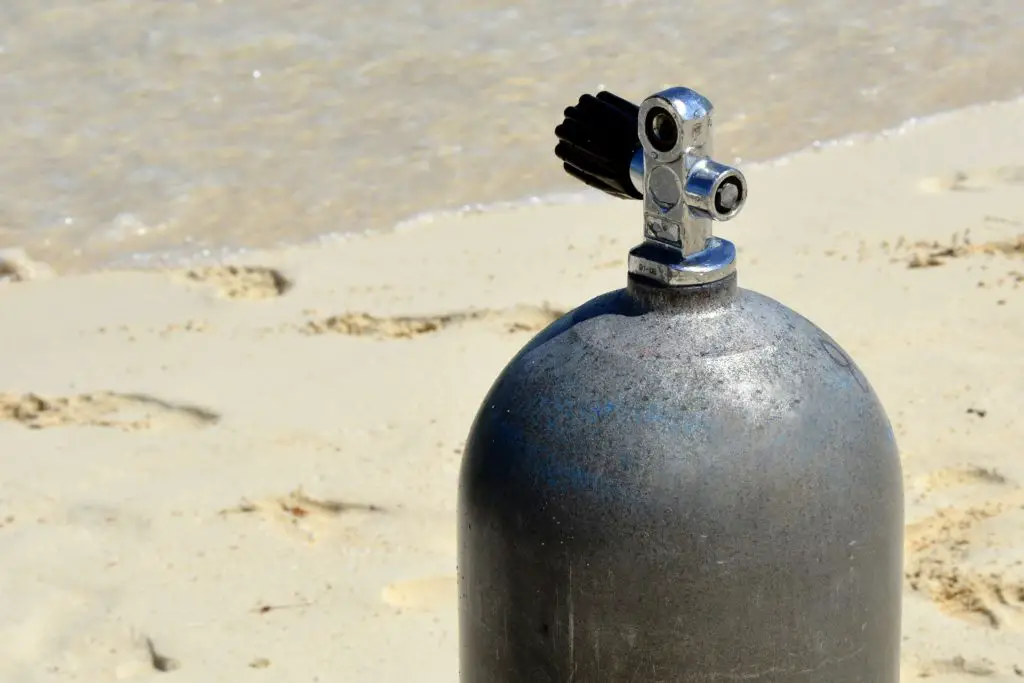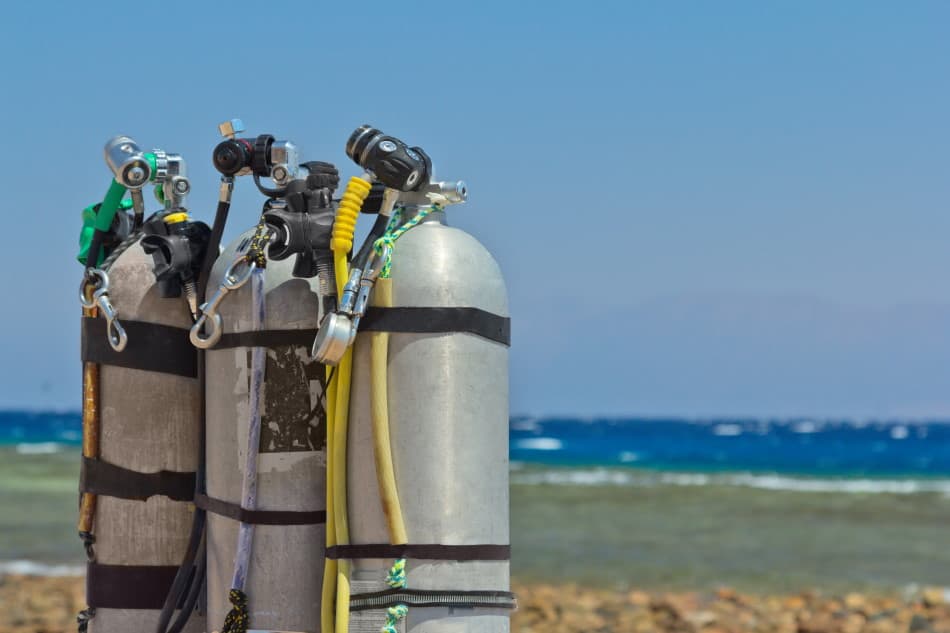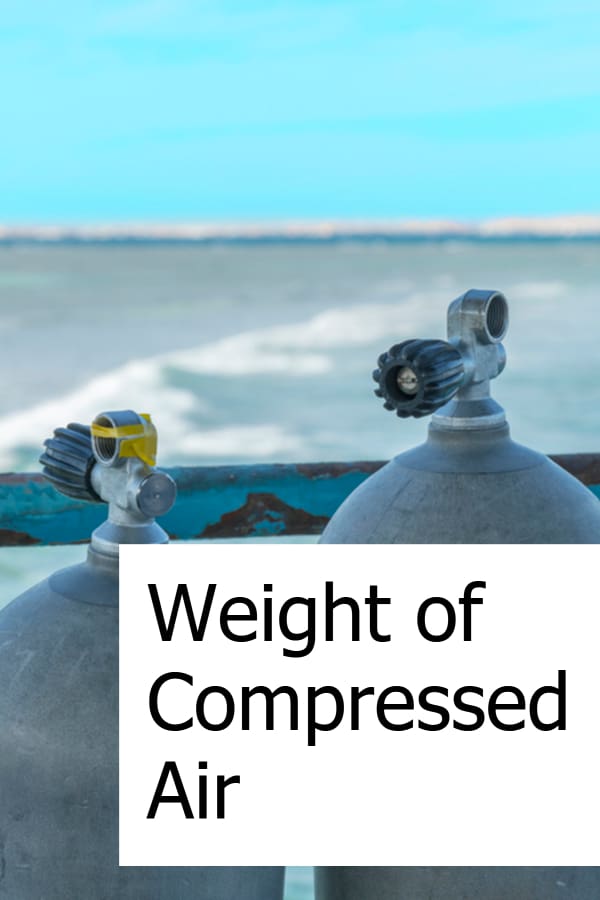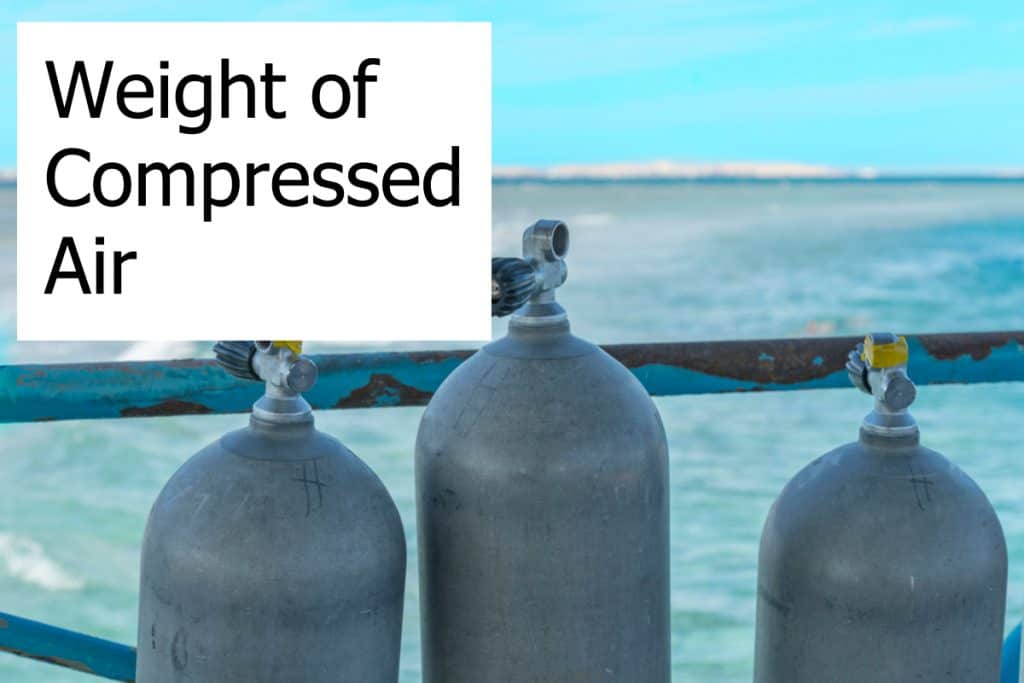Weight of Compressed Air
How much do you really know about the air that you breathe under water?
Even if you’ve been diving for a while, there are still a few questions that are tricky to answer, like what is the weight of your compressed air? How does that weight change when air gets consumed? Is there a difference in weight for Nitrox versus air?
If you’re a little shaky on the specifics, don’t worry. You’re not alone. Here’s a breakdown of the science behind your underwater breathing.
The basics of compressed air
One of the greatest advancements in diving technology has been in air compression, allowing divers more time in the water than ever before.
Best Dive Computer with Transmitter for Air Integration – Reviews and Buying Guide

The process goes something like this. When air is pressurized, its density increases and it can be stored in a smaller tank as its volume decreases. This is done with a special piece of equipment called – you guessed it – a compressor, which not only removes air humidity but should also protect against harmful pollutants.
Tanks used for recreational diving are typically filled with a psi of 2000 to 3500. For a diver using a fairly common aluminum 80-cubic-foot-tank to explore depths of around 40 feet, the compressed air will last anywhere from 45 to 60 minutes. That said, there are many factors that will alter this timeframe, such as the depth of the dive or the breathing patterns of the diver.
How important is the tank?
There’s no way to talk about the weight of compressed air without giving some consideration, first, to the container. More importantly, the construction: scuba tanks come in two types – steel and aluminum – and they vary in terms of weight and buoyancy.
Aluminum tanks, for instance, have a thicker wall and weigh more on land. During the course of a dive, they actually become more buoyant, meaning that the diver will have to consider carrying more weight to keep from floating towards the surface.
On the other hand, steel tanks are lighter and don’t have as much of an effect on buoyancy as aluminum tanks. Divers that utilize these types of tanks don’t have to worry about carrying as much weight as a diver with an aluminum tank.
Overall, the average weight of these tanks on land range from 25 to 35 pounds for recreational diving, and can usually store around 6 and a half pounds of air.

What are some other weight considerations?
Well, as you can see, air in a tank has weight, and over the course of the dive, the diver releases the weight by breathing it. So, although the weight of the tank remains constant, the weight inside decreases over time, which can affect buoyancy.
Here’s another way to think about it: while diving, the loss of air in the tank can make an aluminum 80-cubic-foot-tank change from around 1.5 pounds negatively buoyant (pulling the diver towards the sea floor) to about 4 pounds positively buoyant (pulling the diver to the surface). It’s important to predict this change so that you go into your dive with the proper weight.
How about the composition?
One last question that many divers face is where Nitrox factors into the weight discussion. It’s an interesting question. Nitrox is made up of a higher oxygen content, about 22 to 40% versus the 21% of normal air, so you would assume that the different mixture would also have a different weight.
After all, nitrogen is 3% lighter than oxygen, meaning that Nitrox would weigh more than regular compressed air. Overall, though, this weight change is negligible, and each mixture will carry the same weight considerations.


